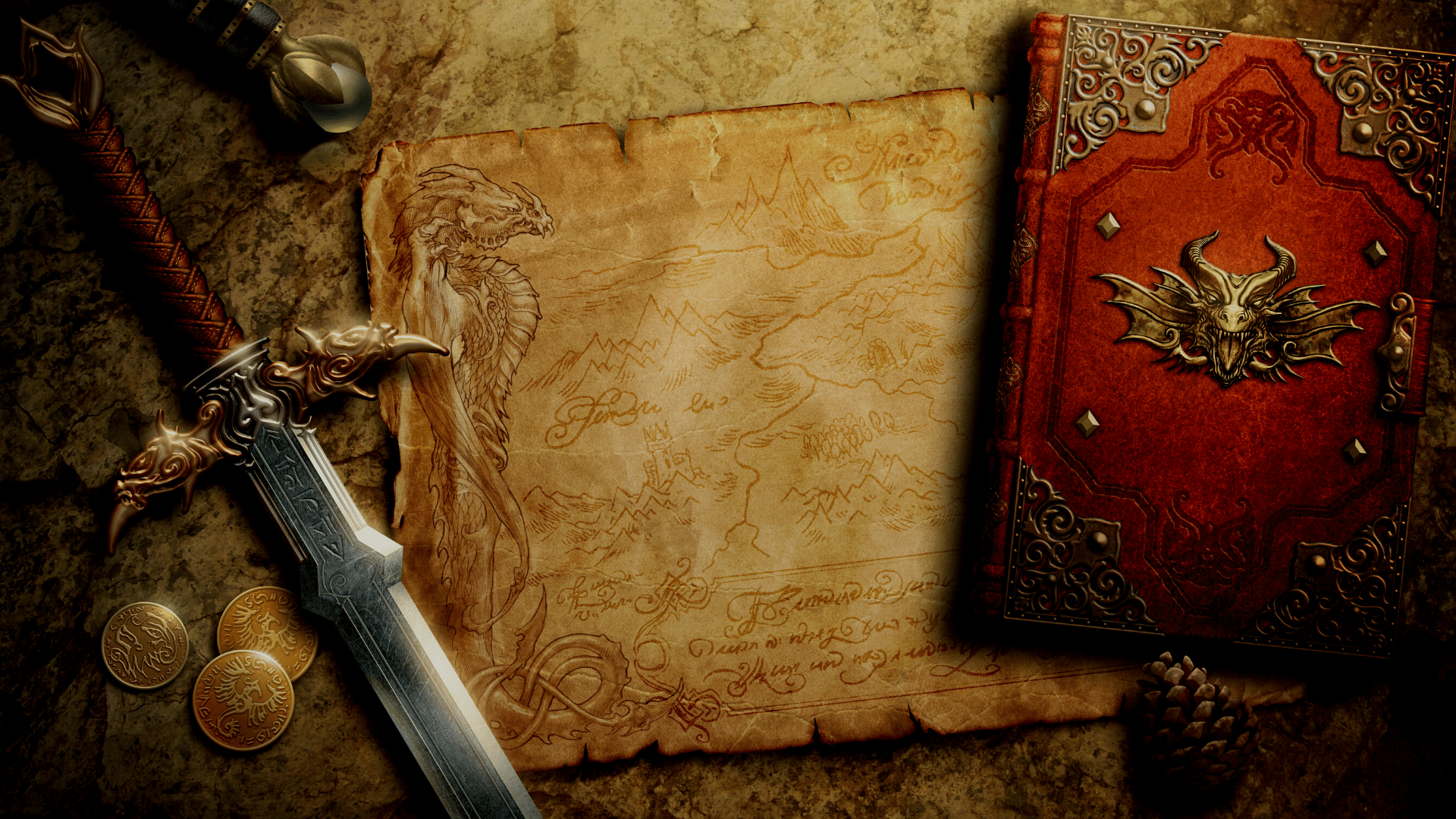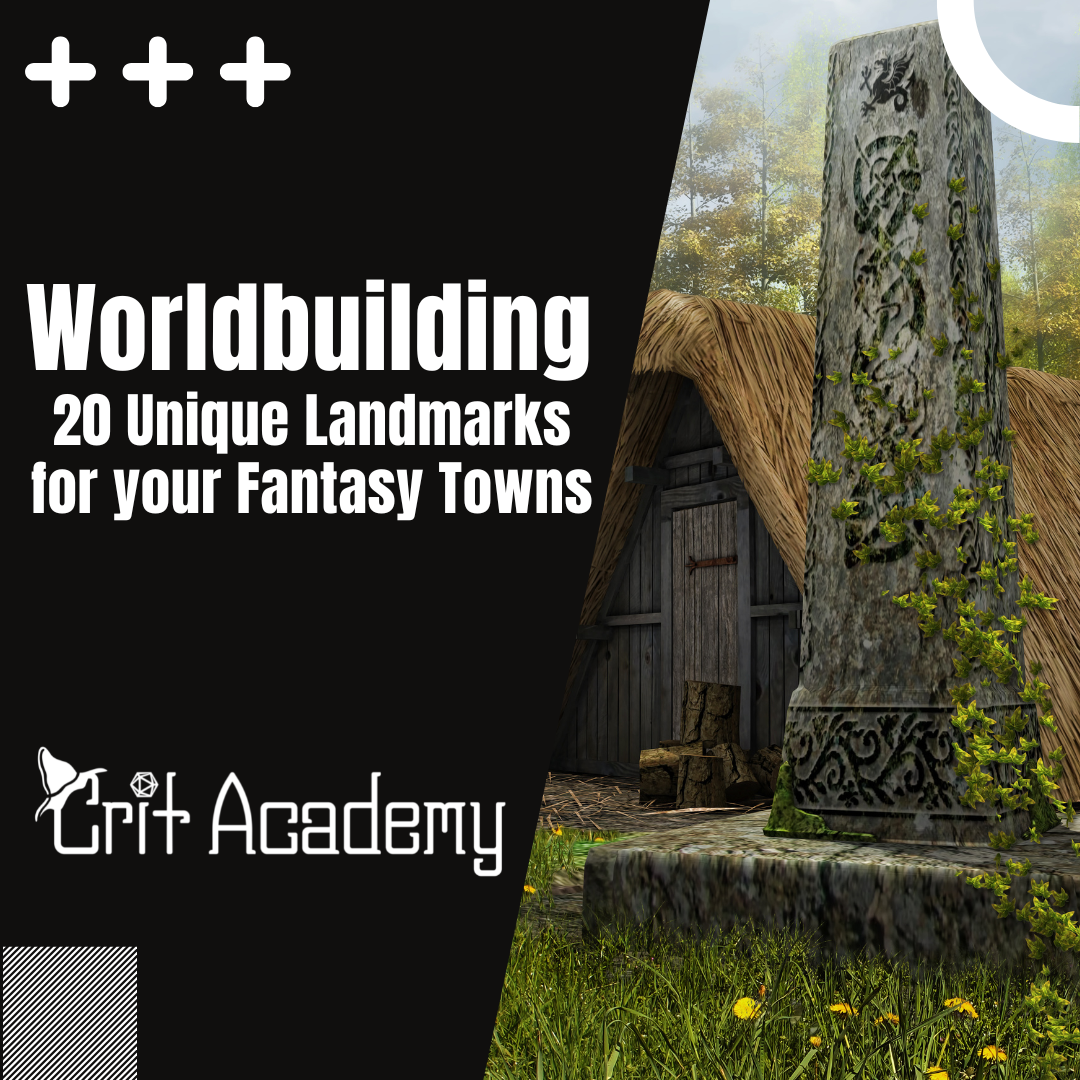
CRIT ACADEMY
BLOG

Make sure you check in regularly for up-to-date Strategies, Tips & Tricks, and tons of Guides!
You can also subscribe to our newsletter!
Become a subscriber today for FREE Dungeons & Dragons Loot!
Receive a FREE copy of our electrum bestseller Challenge Accepted!
Receive a FREE resource guide that includes not only our favorite finds but some custom resources we created as well.
You will also be entered to win any PRIZES we give away on the show.
Get the latest news & updates
Be the first to know about the latest news and releases
Get notifications when a new blog or other important event occurs.
If you are looking for a specific topic or guide,
you can search our blogs here!

Unleashing the Chaos: Enhancing D&D Combat with Marvel Midnight Suns!
What if your Dungeons & Dragons combat felt as thrilling and cinematic as the turn-based battles in Marvel’s Midnight Suns? Imagine every swing of the sword, every spell cast, and every tactical move woven seamlessly into a story bursting with energy and environmental impact. From electrified puddles to collapsing ruins, Midnight Suns takes strategy to dazzling heights, and now you can bring that same dynamic spirit into your tabletop adventures.
As a Dungeon Master, you have the power to transform ordinary combat encounters into unforgettable moments of creativity and chaos. Inspired by the tactical brilliance of Marvel’s Midnight Suns, this guide offers tips and tricks to incorporate unique environmental interactions and in-combat quests into your Dungeons & Dragons sessions. Let’s explore how to captivate players with tactical depth, immersive storytelling, and thrilling banter to bring your battles to life.

Weapon Perks, Armor & Toolkits
Are you tired of using the same old boring weapons and armor in your favorite roleplaying game? Do you want to spice things up and give your characters some unique identity? Look no further than Exotic Equipment Perks!
One of the most exciting parts of any RPG is creating and building your characters. You want them to be unique, with their own backstory, class abilities, race, skills, and combat styles. But when it comes to weapons and armor, the options in 5th Edition can feel lackluster. Sure, you might have a few different damage dice and some traits that set them apart, but for the most part, they all feel the same.

Worldbuilding: 20 Unique Landmarks for your Fantasy Towns
As a Game Master, creating a world that feels vibrant and alive is crucial for immersing players in your RPG game. One way to achieve this is by designing towns and cities that are full of unique and memorable landmarks. These landmarks can serve as points of interest, focal points for quests, and even as plot devices that tie into your game's overarching story.
In this blog, we will explore 20 unique village landmarks that you can use to add depth and intrigue to your game world. Each of these landmarks is designed to give players a sense of wonder and mystery as they explore the town or city they are visiting. From grand cathedrals to ominous graveyards, these features will make your game world feel more like a real place.

Dungeon Dressing: 20 Levers and Switches for your Fantasy RPG
Dungeon Dressing: 20 Levers and Switches for your Fantasy RPG
As a game master, you have the power to shape the world and create a unique and memorable experience for your players. One way to do this is by including levers and switches in your dungeons. These seemingly simple objects can add depth and complexity to your game, challenge your players, and create unexpected outcomes. By including levers and switches, you can add an extra layer of interaction and problem-solving to your dungeons, encouraging your players to think creatively and use their skills to overcome obstacles. Whether they're enchanted to only respond to a specific person, connected to a deadly trap, or located in a place that can only be accessed by solving a complex maze, levers and switches can add excitement, intrigue, and unpredictability to your game. In this blog, we'll explore 20 unique levers and switches that you can use in your role-playing games to create an unforgettable experience for your players.

10 Worldbuilding Vistas for your RPG Game
Welcome to our blog on beautiful vistas for your RPG world! As a Dungeon Master, one of the joys of running a campaign is the opportunity to transport your players to a variety of beautiful, immersive locations. Whether it's a snowy mountain range, a rolling grassland, or a serene lake nestled in the heart of a dense forest, the right vista can set the stage for an unforgettable gaming experience. In this blog, we've compiled a list of 10 beautiful vistas for you to use in your own campaign, complete with descriptive text to help you set the scene for your players. We've also included additional sensory details to help you bring these locations to life. We hope that these vistas will inspire you and help you create a rich, immersive world for your players to explore.

RPG Mechanics you need to Add to make your D&D Game Better!
Dungeons and Dragons is known as the world’s greatest roleplaying game. But turns out, there are many other fantastic and amazing games out there. Some of these Tabletop RPG games have come up with some pretty fantastic concepts that can really improve any RPG with a little tweaking. Below is a collection of RPG system mechanics that you can use to enhance your gaming experience. Use one, use none, use all. Whatever fits your table, toss it in. I promise these will add to the gameplay and fun of the experience.
Aspect system (from Spirit of the Century, Fate Core):

Adventure Cookbook 2: An Adventure Outline for Any Fantasy RPG
Part two in our Adventure Cookbook Series!
Creating an entire, well-designed, and well-thought-out adventure for your favorite Roleplaying game is a lot of fun. With that fun, comes hours of dedicated writing, cramped hands, and blank stares at the paper or screen. Well, with this powerful outline, an “Adventure Cookbook” will give you all the ingredients of a unique adventure or campaign. All you have to do is fill it in with NPC and location names of your unique world. Then top it off with a few monsters and you’re ready to roll.

Religious Quests for Divine RPG Characters
Many divine classes such as clerics, paladins, druids or anyone with the acolyte background are often required to undertake tasks to prove their devotion to their deity. As GM, work with your players so that you can tailor the quest to their unique character. The focus should be a test of spiritual strength and commitment to whatever beliefs the character holds.
We’ve put together a list of quests with a variety of approaches you can use to fill out the character’s spiritual needs.

Stair and Ladder Alternatives in D&D
Are you tired of using boring stairs, ropes and ladders for your D&D adventurers to traverse the multiple levels of dungeons? Well then, stick around as we delve into Chutes, Ladders and Stair Alternatives for your Dungeons and Dragons Game

D&D: Lore and Legends: The Far Realm
The mortal realm of Dungeons & Dragons is vast and full of adventure. Dangerous beasts stalk the lands, powerful necromancers seeking to conjure an undead army, and hordes of goblins and orcs raiding villages are just a few of the common experiences many adventurers face throughout their journey.
Despite its size, the mortal realm is just a small piece of a much larger cosmos. With the introduction of Spelljammer, the scope of adventures has grown to include worlds from every part of the multiverse. However, we can’t forget the myriad of realities that are the foundation of existence in the D&D world. All of these realities that exist beyond the mortal realm are known as planes.

Money Master's Guide: Game Mastering For Fun And Profit
Money Master's Guide: Game Mastering For Fun And Profit
We all hope to someday turn our hobby into a full-time job. Most of us don’t hope to get rich, but enough to pay the bills by doing what we love is a great start. Arjade Productions presents Raymond Hick’s Money Master’s Guide - Game Mastering for Fun and Profit gives you all the tools and details you need to help get you started if you’re in the tabletop gaming industry.
Since we are a D&D 5e show, the most obvious focus for our topic today would be the chapters that cover closely related topics. Of the 12 total, they ALL apply. So, instead, we are going to focus on a few that really stand out, and those, that we believe to be the best starting point.

D&D: Monster Hunter 5e
In Monster Hunter, the player takes the role of a Hunter. Slaying or trapping large monsters across various landscapes as part of quests given to them by the locals. As part of its core gameplay, players use loot gained from slaying monsters, gathering resources, and quest rewards to craft improved weapons, armor, and other items that allow them to face more powerful monsters.
Inside Amellwind's Guide to Monster Hunting you will find over 150 pages full of new races, factions, feats, equipment, monsters, and more. For this show, we are going to focus on the hunting and crafting aspects, but there is much Monster Hunter goodness to be found beyond this.

D&D: How to Create a Seedy Dive in Dungeons and Dragons
How to create a Seedy Dive for Dungeons and Dragons
The best information adventurers in Dungeons and Dragons seek isn’t found in a Tavern or an Inn but inside a seedy dive. Stick around as we delve into how to create a great seedy dive for your more unscrupulous characters to gather information or pass their downtime.

10 Desert Themed Encounters for Dungeons & Dragons
The desert has always been a mysterious, dangerous place. It's a harsh environment to live in and explore, but if you can survive the heat and sandstorms, then what treasures await? Here are ten encounters I've designed that take place in deserts all over the world.

D&D Advice: How to Run a Successful Encounter in Dungeons and Dragons
Running a successful Dungeons and Dragons 5e encounter is all about preparation. If you take the time to prepare, your players will have a much more enjoyable experience. Here are four tips to help you prepare for your next D&D encounter.
1. Know Your Players
The first step in preparing for a successful D&D encounter is to know your players. If you don't know what sort of things they like or don't like, it will be much harder to craft an encounter that they will enjoy. Pay attention to the sorts of things they say during the game and try to incorporate those things into your encounters. If you know one of your players loves puzzles, for example, try to include a puzzle in your next encounter. What’s great about this, is that they can all be done together. During combat you can easily include a puzzle that one player must solve during the battle. Putting a round limit can even push the tension in the game and make the characters all feel engaged. Whether they are slaying monsters, or solving the puzzle.
2. Know Your NPCs
Just as important as knowing your players is knowing your NPCs. If you're running an evil campaign, make sure you know how evil your NPCs are. You don't want them to be too evil, or the players will get frustrated, but you also don't want them to be too good, or the players will get bored. Find that perfect balance and your players will thank you for it. It is my experience that the best enemies are the ones that have very understandable motivations. This gives the encounter with them far more depth, especially when the characters and their players can almost agree with them. A great example is Mr. Freeze in the horrible Batman and Robin flick. Mr. Freeze is a doctor stealing and looting all so he can afford to buy the materials he needs to cure his dying wife.
3. Know Your Environment
Another important thing to keep in mind when preparing for a successful D&D encounter is the environment. Is it a forest? A Cave? A Mansion? Knowing the environment will help you set the scene and make it more believable for the players. It will also help you determine what sorts of creatures might be lurking around, which can be helpful when deciding what sort of encounter to run. This is great because it also helps us decide on the types of threats that exist in the environment. A battle in a swampy mire with sludge knee deep is going to have a strong contrast to fighting in an icy cave where every movement could drop a character on their rump.
4. Make use of Terrain
Terrain can be a very important part of an encounter. It can provide cover for characters, create obstacles to overcome, or even trap unsuspecting victims. When used effectively, terrain can make an encounter much more dynamic and exciting. So when designing your encounters, be sure to take advantage of the terrain around you. A battle in a slick icy cavern with stalactites on the ceiling that can be dropped down onto unsuspecting characters is great. We can further use that dropped icy stalactite as cover from battle now too. Having your monsters utilize the terrain can help engage the characters in a fun way. It might just make the difference between a boring encounter and a memorable one.
5. Set the stakes
The next step is to set the stakes. What’s at stake in this encounter? Are the players just trying to get through the room without getting hurt? Or are they trying to defeat an enemy before they successfully open a portal to a dark world. Perhaps they need to solve a puzzle to enter a vault? What are the risks of failure and the rewards of success? Solving a puzzle to stop the stream of water filling a room is a clear danger. How about stopping a raging fire in a small village before it burns down? Make sure the stakes are clear so that the players know what they need to prioritize in order to obtain success.
6. Plan Ahead
By following these four tips, you'll be well on your way to running a successful Dungeons and Dragons 5th edition encounter. Just remember to always keep your players in mind and plan ahead as much as possible. With a little preparation, your next D&D encounter will be one for the ages!

Designing a Fictional Alphabet for Dungeons & Dragons
So, why would we want to design our own fictional alphabet? Don’t we got enough to do as GMs? Let’s take a look at a short list of reasons why.
Written language is everywhere, and is a key component of nearly every culture. If you want your world to feel like it has its own living, breathing culture, then you need to think about its written language.
If your game is set in a fantasy such as Dungeons and Dragons, your characters don’t speak English (or your native language), they speak common. But what is common?
If your game is in a fictional world, a bespoke alphabet shows that you've put some solid effort into making your world feel new, fresh and unique. It is worth noting that Wizards of the Coast does have some unique writing for the more common languages such as Elvish, Draconic and Dwarvish.
Your alphabet could be used as a sort of code that your players need to try and decipher. You could even base puzzles around it.
A fictional alphabet means you can populate your world with fun looking wanted posters, scrolls, signs and so much more. For instance, inscriptions in an ancient ruin could indicate the presence of a long-gone foreign race, while text on the side of a ship may mark it as an enemy.

D&D Dungeon Dressing: 20 Things to Find in an Alchemist's Shop
Dungeon Dressing: 20 Things Your D&D Characters Might Find in a Fantasy Alchemist Shop
Alchemists are often found in fantasy settings, selling their strange and dangerous wares. Here are 20 things your D&D characters might find in a fantasy alchemist shop.
